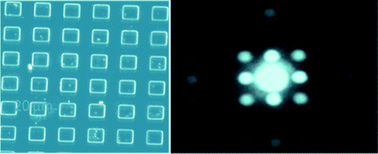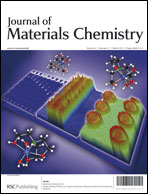Soft lithographic patterning of spin crossover complexes. Part 2: stimuli-responsive diffraction grating properties†
Abstract
Surface-relief diffraction gratings of various geometries were fabricated from the molecular spin crossover complex [FeII(hptrz)3](OTs)2 using the soft lithographic method described in Part 1 of this paper [Quintero et al., J. Mater. Chem., DOI: 10.1039/c2jm15662h]. The grating geometry and optical properties were obtained from


 Please wait while we load your content...
Please wait while we load your content...